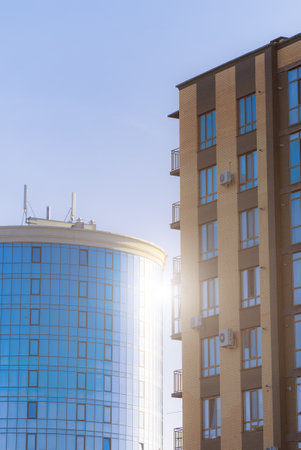1. Understanding the Importance of Clean Water Tanks & Borewells in India
In every Indian household, apartment complex, and commercial building, water tanks and borewells play a central role in daily life. With the diverse climates and varying water availability across our country, these systems are essential for providing a reliable supply of water. However, their maintenance is often overlooked, leading to potential health risks and operational issues. Ensuring that water tanks and borewells remain clean and in optimal condition is not just a matter of convenience—it is vital for the health, safety, and well-being of families and communities alike. Contaminated or poorly maintained water sources can result in waterborne diseases, foul odours, and even damage to plumbing systems. In both urban apartments and independent homes, as well as bustling commercial spaces, prioritizing the upkeep of these systems reflects a commitment to sustainable living and community welfare. By understanding their importance, we take the first step towards healthier living environments for everyone.
Common Issues Faced in Indian Water Tanks & Borewells
When it comes to maintaining the best water tank and borewell condition in independent houses, apartments, and commercial buildings across India, several challenges are commonly encountered. Due to varying climates, soil types, and urbanization, Indian water storage and extraction systems face unique issues that require local understanding and practical solutions.
Frequent Problems in Water Storage & Borewell Systems
| Issue | Description | Local Impact |
|---|---|---|
| Sedimentation | Accumulation of sand, silt, or mud at the bottom of tanks or borewells due to the nature of groundwater and soil erosion. | Reduces storage capacity and clogs pipes, leading to frequent maintenance needs. |
| Contamination | Entry of bacteria, algae, chemicals, or sewage into the water supply due to poorly sealed tanks or proximity to drains. | Health hazards for residents; common during monsoons or in densely populated areas. |
| Low Water Yield | Borewells running dry or producing less water because of over-extraction or declining groundwater levels. | Affects daily water availability, especially in summer months and rapidly growing cities. |
| Tank Leakages | Cracks or poor construction leading to water seepage from storage tanks. | Wastage of precious water resources and potential structural damage to buildings. |
| Poor Maintenance Practices | Lack of regular cleaning schedules and inspections for both tanks and borewells. | Aggravates all above problems and shortens system lifespan. |
The Local Angle: Why These Issues Persist
In many parts of India, the combination of high population density, fluctuating weather patterns (from intense heat waves to heavy monsoon rains), and aging infrastructure makes these issues more severe. For instance, ground-level contamination is a bigger concern in urban slums where open drains run close to borewells. Similarly, rural areas may suffer from sedimentation due to loose soils and lack of filtration systems. Understanding these unique challenges is essential for anyone aiming to keep their water tanks and borewells in optimal condition—whether you’re managing an independent home, a multi-storey apartment complex, or a bustling commercial building. Regular awareness campaigns and adopting region-specific best practices can go a long way toward healthier and more reliable water systems.

3. Best Practices for Maintaining Water Tanks in Independent Houses and Apartments
Proper maintenance of water tanks is vital for ensuring safe, clean water supply in Indian homes and apartments. In our diverse communities, following a regular cleaning and maintenance schedule not only prevents waterborne diseases but also supports the spiritual value placed on purity and cleanliness.
Regular Maintenance Tips
It is advised to inspect your water tank at least once every three months. Look for cracks, leaks, or signs of contamination such as algae or sediment build-up. Use a torch or mobile light to check corners where dirt can accumulate. Immediately address any leaks to prevent wastage and structural damage.
Cleaning Schedules
As per local recommendations, cleaning residential tanks twice a year—before and after monsoon—is ideal. For apartments with larger storage systems, quarterly cleaning is highly recommended. Always drain the tank completely before cleaning and ensure the lid is secured tightly after every use to prevent debris entry.
Culturally Preferred Methods
Many Indian households prefer using natural disinfectants like neem leaves or turmeric during tank cleaning, reflecting Ayurveda’s focus on holistic health. While scrubbing, avoid harsh chemicals; instead, use mild soaps or eco-friendly agents. Rinse thoroughly to eliminate any residue.
Community Involvement & Local Traditions
In apartment complexes, forming a residents’ association committee to oversee water tank maintenance ensures collective responsibility. Some communities observe auspicious days such as Akshaya Tritiya or Makar Sankranti for deep cleaning activities, aligning hygiene practices with spiritual renewal.
By integrating these best practices into daily routines and respecting both scientific guidelines and cultural wisdom, we can maintain optimal water quality in our homes and ensure the well-being of all residents.
4. Effective Borewell Condition Management for Reliable Water Supply
Ensuring a reliable water supply from borewells is essential for independent houses, apartments, and commercial buildings across India. Effective management involves understanding local strategies, adapting to seasonal variations, and incorporating traditional wisdom. This holistic approach not only preserves borewell health but also guarantees long-term efficiency and sustainability.
Local Strategies for Borewell Maintenance
Across India, communities have developed specific practices tailored to their unique geographies and water tables. Here are some locally trusted strategies:
| Region | Common Practice | Benefits |
|---|---|---|
| South India | Regular flushing during pre-monsoon and post-monsoon periods | Prevents silt accumulation; maintains flow rate |
| North India | Borewell recharge using rainwater harvesting pits | Improves groundwater levels; extends borewell lifespan |
| Western India | Periodic chemical treatment for hard water zones | Reduces scaling; maintains pump efficiency |
| Eastern India | Silt trap installation at the mouth of borewells | Keeps debris out; minimizes blockages |
Seasonal Considerations in Borewell Management
The Indian climate features marked wet and dry seasons, each affecting borewells differently. Proactive measures during these periods include:
- Pre-Monsoon: Conducting yield tests and cleaning borewell casing to prepare for increased usage during summer.
- Monsoon: Preventing surface runoff contamination by sealing borewell heads and diverting stormwater.
- Post-Monsoon: Recharging wells through harvested rainwater and checking for any damages caused by flooding.
- Winter: Monitoring flow rates as groundwater table stabilizes, ensuring uninterrupted supply.
Traditional Approaches and Indigenous Wisdom
India’s rich heritage offers time-tested methods that modernize well with today’s needs:
- Kutcha Recharge Pits: Simple earthen pits around borewells collect rainwater, allowing gradual percolation.
- Lime Application: Adding slaked lime neutralizes acidity, reducing corrosion of metal pipes within the borewell.
- Panchayat-Led Water Audits: Village councils periodically inspect community wells, fostering shared responsibility and early detection of issues.
- Bamboo Casing (Historic): In areas where metal is scarce, bamboo casings reduce siltation and maintain water clarity, though now rarely used except in remote villages.
Sustaining Borewell Efficiency & Longevity: Key Takeaways
- Routine Inspection: Schedule professional checks every 6-12 months.
- Avoid Over-extraction: Use automated timers or float switches to prevent excessive drawdown.
- Pump Protection: Install filters and ensure proper electrical grounding to safeguard submersible pumps.
- Community Awareness: Encourage responsible water use and participation in recharge initiatives.
Cultivating Mindful Practices for Water Security
The synergy of local knowledge, seasonal vigilance, and traditional approaches empowers households, apartments, and businesses to safeguard their borewells. By nurturing this mindful relationship with water sources, communities across India can ensure a resilient supply—today and for generations to come.
5. Latest Technologies and Eco-Friendly Solutions in Water Storage
Indias dynamic urban landscape is seeing a rapid adoption of advanced and eco-friendly water storage solutions, especially in independent houses, apartments, and commercial buildings. With growing awareness about water scarcity and environmental impact, residents and builders are increasingly turning towards technologies that not only ensure the best condition for water tanks and borewells but also promote sustainable practices.
Smart Water Level Controllers and Automation
Indian homes and businesses are embracing smart water level controllers that automatically manage tank filling, preventing overflow and wastage. These systems use sensors compatible with Indian municipal water supply patterns, ensuring efficient utilisation even during irregular supply hours. Automation reduces manual intervention and provides real-time updates through mobile apps—an innovation that resonates well with tech-savvy Indian homeowners.
Rainwater Harvesting Integration
Integrating rainwater harvesting with water tank systems has become a hallmark of eco-conscious construction in India. Many residential societies and commercial complexes now install rooftop collection units connected directly to storage tanks or borewells. This practice not only recharges groundwater but also aligns with government recommendations for sustainable urban living.
Use of Non-Toxic, Durable Materials
Modern water tanks in India are increasingly manufactured using food-grade plastic or stainless steel, both of which ensure safe drinking water and withstand local climatic conditions. Additionally, anti-bacterial coatings and UV-resistant materials address hygiene concerns common in Indian environments, maintaining the purity of stored water over extended periods.
Sustainable Borewell Maintenance Practices
Borewell management is undergoing a green revolution. Eco-friendly desilting methods, solar-powered pumps, and periodic water quality checks are now standard in many independent houses and gated communities. Solar pumps are particularly popular in rural areas, leveraging abundant sunlight to reduce electricity costs while supporting reliable water extraction.
Community Awareness and Government Initiatives
Increasing community engagement through workshops on water conservation and maintenance best practices encourages collective responsibility. Schemes like Jal Shakti Abhiyan advocate for technology-driven solutions and offer incentives for adopting green products—making sustainable choices accessible to all segments of Indian society.
The integration of these India-specific technological advancements not only improves the longevity and efficiency of water tanks and borewells but also fosters an environment-conscious mindset vital for the country’s future sustainability.
6. Local Regulations, Cultural Considerations, and Community Participation
In India, maintaining the best water tank and borewell conditions in independent houses, apartments, and commercial buildings is not just a matter of technical maintenance but also of adhering to local regulations, respecting cultural values, and fostering active community involvement. Government guidelines such as those from the Central Ground Water Authority (CGWA) and local municipal bodies provide clear rules for borewell construction, periodic cleaning, water usage limits, and prevention of contamination. Every building owner or society must register their borewells and obtain necessary permissions before drilling or operating them. Regular inspections by local authorities ensure compliance with safety standards and sustainable water extraction practices.
Culturally, water is deeply revered in Indian society. Traditions like keeping water tanks covered to maintain purity or performing rituals before first-time use of borewells reflect these attitudes. Respecting such traditions not only honours local beliefs but also motivates residents to take extra care in maintaining water sources. In many communities, there are unwritten codes about sharing water resources, especially during festivals or periods of scarcity, which naturally fosters cooperation.
Community participation plays a vital role in achieving optimal water management. When residents are actively engaged—whether through forming maintenance committees in apartments or organizing awareness drives in neighbourhoods—there is a greater sense of ownership and responsibility. Regular meetings can address issues like leakage detection, timely cleaning schedules, and equitable distribution of water from shared tanks or borewells. Initiatives such as rainwater harvesting drives or workshops on water conservation further empower the community to preserve this precious resource.
Ultimately, aligning with government regulations, honouring cultural practices, and encouraging community-driven efforts create a harmonious system where independent homes, apartments, and commercial buildings can maintain the best possible condition of their water tanks and borewells. By blending legal compliance with mindful living and collective action, Indian communities set inspiring examples for sustainable urban water management.


